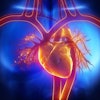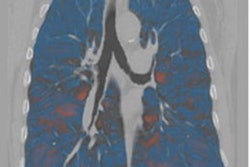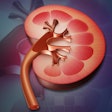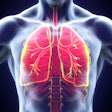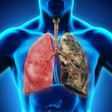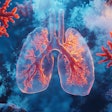Quantitative CT (QCT) can capture inflammation patterns of bronchovascular bundle textures of the lung -- and thus help clinicians assess the severity of chronic obstructive pulmonary disease (COPD), researchers have reported.
The findings could provide a "noninvasive means to test novel disease-modifying therapies," wrote a team led by doctoral candidate Hira Awan of the University of Iowa in Iowa City. They were published April 21 in Chest.
While COPD inflammation typically begins in the large airways, "it progressively involves the small airways, lung parenchyma, and pulmonary vasculature, leading to remodeling of the bronchovascular bundles," the investigators explained. QCT texture analysis is increasingly used to identify structural and functional abnormalities in various lung diseases, and QCT texture biomarkers -- bronchovascular bundles and CT density gradient textures -- show promise for assessing the severity of COPD, since these markers are associated with systemic inflammation, impaired lung function, and all-cause mortality, they wrote.
Awan and colleagues investigated the efficacy of these QCT biomarkers for predicting poor COPD outcomes using data from the SPIROMICS (n = 2,981) and COPDGene (n = 10,305) studies. They tracked the two biomarkers as well as patient factors such as age, sex, body mass index, race, smoking status, smoking pack-years, presence of emphysema, and airway wall thickness as disease prognosticators.
The group reported the following disease indicators identified by the QCT biomarkers:
• Increased bronchovascular bundles texture was significantly associated with CT emphysema and increased airway wall thickness.
• Elevated CT density gradient was associated with a higher tumor necrosis factor.
• Increased CT density gradient and bronchovascular bundles textures were also associated with a lower forced expiratory volume in one second (FEV1) and six-minute walk distance capability.
• Both bronchovascular bundles and CT density gradient textures were significantly associated with all-cause mortality -- independent of CT emphysema and airway wall thickness.
The bottom line? Tracking these QCT biomarkers "may provide imaging evidence of … overall disease burden in COPD," the group concluded.
The complete study can be found here.





